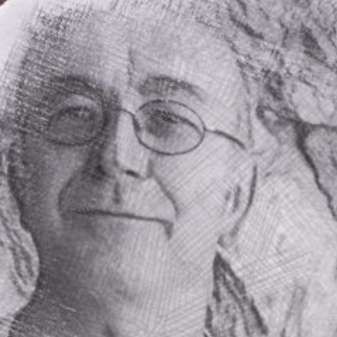British composer, Jonathan Harvey, could be described as the embodiment of this year's Edinburgh International Festival theme - Europe meets Asia. His spiritual journey, from Christianity via Steinerism to Vajrayana Buddhism, is reflected in his compositional path. This concert presented a trilogy of recent work resulting from Harvey's association with Ilan Volkov and the BBC Scottish Symphony Orchestra.
Body Mandala (2006), which opened the concert, was influenced by Harvey's witnessing body purification rituals in Tibetan Buddhist monasteries in North India. In his own programme note he describes the sound world central to such ceremonies: dung-chen (low horns) magnificently depicted here by the trombone section; gling (4-note oboes) and ro-mo cymbals. Contrary to what many might imagine, there are moments of great energy in these ceremonies and this was an invigorating opening to the evening. What delighted me particularly in this regard was the exhilarating orchestration, for example snapping percussion subsiding to reveal delicate sustained harmonies in strings or woodwind.
In his programme note to the closing work ...towards a Pure Land (2005), Harvey describes the ideal of 'a state of mind beyond suffering where there is no grasping'. Quite how this can be put across compositionally might constitute quite a puzzle for many. Arnold Whittall's excellent biography of Harvey in the programme, refers to the balance of 'statement' and 'ambiguity' in music. I took this to mean the elusive territory between two opposing temptations: the development of material to an inevitable, preferred conclusion, and an artificial calm based on developmental stasis which itself demonstrates clinging to a predetermined idea. I found it a very meditative process being carried along by the eddying textures and trying to shed the currency of expectation and its violation.
The evening's central work, Speakings (2007-08) concerned itself with an topic dear to neuroscientists and evolutionary psychologists – the connection between speech and music. More specifically, one focus was language acquisition, whether it be the dawn of language in our species, or the process by which an infant learns its mother tongue – the orchestra being cast in the role of such an infant. In this endeavour electronics from IRCAM/Radio France were employed - not so much in form of prepared recordings, but rather the role of 'shape vocoding' a small, mixed concertante who occupied the previously empty inner-arc of the orchestra. This was an extremely expressive extension to orchestration. Now and again, having cast my eyes round the remainder of the orchestra, I'd be drawn back to the centre, and often surprised, to discover which mic'd up instrument was the source of the intriguing sound which had grabbed my attention. More impressive still was the relationship between natural instruments and electronically manipulated ones. Just one hearing of this piece was sufficient to convince me that Harvey's use of electronics is about music and not gimmickery. The reason I felt this so strongly is that his manipulations sounded like orchestration and his orchestrations so inventive that one would swear electronics had lent a hand. Only this piece featured electronics but there were moments in the others where I could have sworn that new colours were being imported into the piece. In addition to on-stage speakers, there were others to the side, adding the dimension of space to those of pitch, duration, dynamics and timbre. In such moments it felt as though the hall itself were a magical addition to the orchestral forces.
Ilan Volkov guided the orchestra with a quiet energy. Even in music as complex as some passages of the evening's pieces, his intentions were so clear that one could imagine a school orchestra capable of following. Trusting the musicians to be carried to full volume by the music, he seemed more concerned with the return to quiter landscapes – stemming one premature impulse to applaud from the audience with a calmly raised left hand.
The concert was being recorded for broadcast at a later date on Radio 3 and I would urge lovers of music and sound to look out for it.


